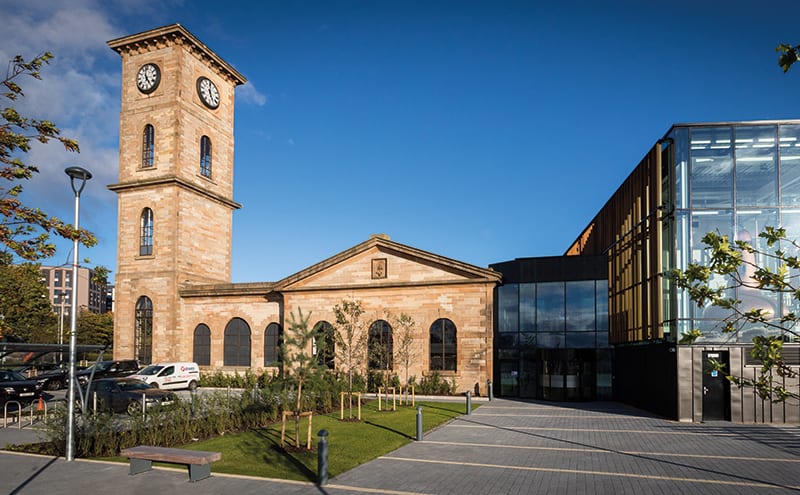Glasgow’s newest whisky-maker is re-establishing long-lost links with the city’s industrial heritage

Remnants of Glasgow’s past life as Second City of the Empire can be seen all along the banks of the River Clyde. Many of these fixtures and fittings are a reminder of the heaving, clanking and vital city at the height of its industrial powers.
A good number of the buildings which were part of the story of the Clyde have vanished or fallen into ruin, but one landmark that has doggedly withstood the ravages of time is the Pumphouse at the Queen’s Dock. This handsome B-listed edifice, with its elegant sandstone bell-tower and four clock faces, sits between the SECC and the zigzags of Zaha Hadid’s award-winning Riverside Museum.
Built in 1877 and opened by Queen Victoria, the Pumphouse formed an entry gate to Glasgow’s shipping ports and the vast Queen’s Dock. It was occupied by Customs and Excise officers, who kept a watchful eye on goods such as whisky, sugar and tobacco coming in and out of the port.
Its Italianate bell tower looked the part, but underneath the blond sandstone campanile façade lay a feat of engineering: a hydraulic accumulator that formed the linchpin of an in-house power station. This power station controlled – among other things – the entry bridge into the Queen’s Dock.

The dock closed in the early 1970s and, after being filled in with rubble from the demolished St Enoch Station in Glasgow city centre, fell into disrepair. In the intervening years, however, the doughty Pumphouse refused to die, serving first as a restaurant and then as a visitor centre for the Glenlee until the tall ship sailed upstream to the Riverside Museum in 2011.
Thankfully, it wasn’t the end of the line for the Pumphouse. If you’ve driven along the Clydeside Expressway recently, you may have noticed a new slate-grey building emerging behind the sandstone. This £10.5m addition to the landscape is a brand new whisky distillery, along with a visitor centre offering tours of the distilling hall. Before whisky aficionados start raising a glass to toast a brand new single malt distilled in Glasgow, however, the Clydeside Distillery’s output won’t be available until at least 2020 or 2021. Unlike the process its cool cousin gin goes through, producing malt whisky takes patience – and time: in order to be called Scotch, the distilled spirit must spend a minimum of three years maturing in oak casks.
The Clydeside Distillery is closely linked to the Pumphouse’s past life. It’s owned and has been developed by A.D. Rattray, a family firm that has been involved in the blending and maturation of malt whisky since 1868, and whose liveried horse-drawn carts would have been a familiar sight to dock workers along the Clyde.
This is just a taster, you can browse the full article with more stunning photography on pages 42-46, issue 116.
DETAILS
Photography Ashley Coombes
Words Jan Pentice




